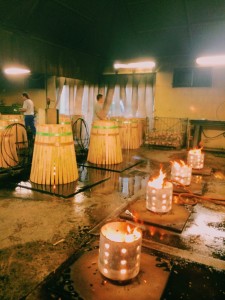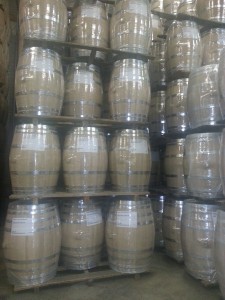What’s on?
A visit to Nadalié Oak barrel maker for the Master’s students in Wine & Spirits
- 2014-10-27
- Posted by: Ludovic Glorieux
- Category: Non classé Tours & Workshops
Students who have just entered the specialized master’s program in wine and spirits got the opportunity to tour to the Medoc region in order to impove their knowledge of first classified growths, discover some of the most beautiful and prestigious wine properties and comprehend the job of barrels maker on the field.
Starting the day tour by the visit of Nadalié Barrel Maker, family-run company for 5 generations, our students could discover the complete process of cooperage (art of oak barrel making), the craftmen who make the beauty of that art, the dexterity, precision, the attention to the quality of the product, a preserved know-how and a passion for the wine and its flavours.
Students were quite impressed and estonished by such a high productivity of these craftmen that is only made possible by a high level of technicity aquired throughout decades of know-how and passion. From the selection of the oak trees to the final customization of the barrel, expertise is at work.
Despite improvement from modern research, analysis, machinery and wood selection techniques, the barrel making process has changed very little over the years and is extremely time intensive. To achieve the highest standards of quality, most of the work is still be done by hand by highly qualified coopers.
Before detailing the process of cooperage, we would like to give a big thanks to Celine who welcomed us ! We wish also to show our respect to Jean-Jacques, Jacqueline and their 3 kids Christine, Stéphane and Guillaume for their will to pursue an ancient art with a touch of innovation, for their desire to share their love for the wine and share it with their customers and humble visitors.
We were also honoured to taste the 2011 vintage of Château Beau Rivage (Bordeaux superieur) produced by Christine Nadalié.
We invite all our readers to go and browse Nadalié website at www.nadalie.fr , and visit their factory in Blanquefort (Medoc region).
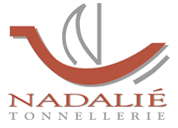
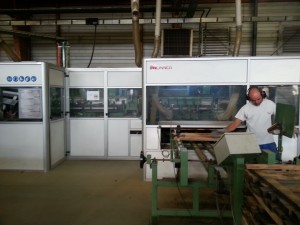
[td]After inspection and selection, the staves are given to a cooper for assembly. The craftsman with irreplaceable experience and, above all, appreciation for work well done, select his staves, assembles them into a metal hoop that is commonly used at all steps of the barrel making. That operation is called “the mise en rose” or “raising the barrel”… it is quite impressive to see how fast and precise these craftmen can go !
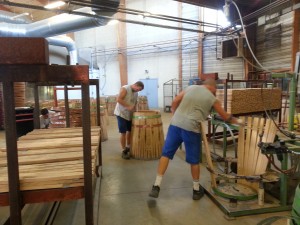
Solidly held in place by three metal hoops, the “rose” is then subjected to a trial by water and fire in the workshop, where it takes its final shape. Repeating movements that are part of the most ancient tradition of his art, the cooper seals joints by passing a wet cloth inside and outside the staves, then heating the barrel over a wood fire for approximately 30 minutes.
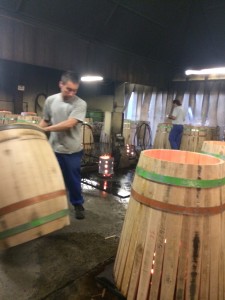
[td]The length of heating results in a “toast level” on which the flavors of the wine aged in the barrel will partially depend. During the heating of the staves, some substances of the wood are caramelized and develop a multitude of aromas (vanilla, fresh bread, buttered bread, nut) that will be found in the final taste of the wine.
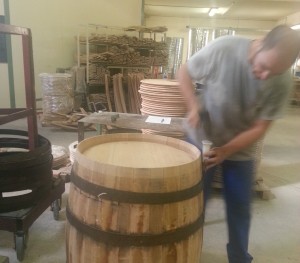
Then a really precise machining is necessary to trim the ends of the staves and to cut the “croze,” the groove in the staves that receives the barrel heads. The cooper then finishes the assembly of his barrel. The body is set up and the heads fitted into the crozes that have been coated with a paste of wheat flour. Then comes the final hooping, put in place with a large mallet.
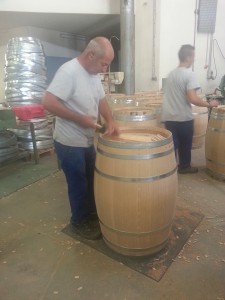
A rigorous test of impermeability is made, by pouring a small amount of hot water under pressure into the barrel. Then, the cooper does the final finishing work, planing and sand-papering to enhance the quality of the oak used and the perfection of the workmanship. His work finished, the master craftsman signs his name on the barrel, a custom that has existed throughout the history of French barrel making.
The barrels are then packed and stored.
![]()
![]()

